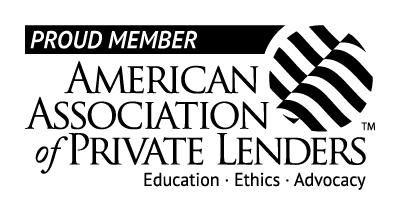Rental properties are a great way to diversify your investment portfolio and create a passive income stream. However, there are a few things you need to know about financing investment properties and second homes since Fannie Mae announced tougher lending guidelines on these properties.
Here, we’ll take a closer look at the new rules and what they mean for the future of rental property financing.
What is Fannie Mae Doing?
Fannie Mae has recently announced a couple of major changes to their lending policies that will take effect on April 1, 2021. The new rules mitigate Fannie Mae and Freddie Mac’s loan risk.
The first change? Fannie Mae is cutting back its own portfolio of loan acquisitions.
The new limit is 7% of the loan volume for each lender recorded over the preceding 52 weeks. This is significantly lower than the previous percentages allowed for investment properties and second homes that hovered somewhere in the teens.
The second change? Fannie Mae also announced that all investment property and second-home loans now must be underwritten with the Desktop Underwriter (DU) and receive an approved or eligible recommendation.
This tightens the criteria for investment property loans, making it harder for investors to qualify for them.
These policies have a significant effect on financing rental properties and second homes after April 1st.
How the New Rules Affect Rental Property Financing
The criteria for underwriting investment properties and second homes are tighter. The assumption is that rental property mortgages carry more risk than mortgages for a primary residence.
What does that mean for property investors? A conventional loan just got more expensive.
With Fannie Mae limiting loan purchases, fewer lenders will have an appetite to originate these loans. That’s because Fannie Mae offers the cheapest mortgage financing source.
Most other lenders charge higher points and ask for more money down.They don’t want to fund a loan only to sell at an interest rate loss elsewhere. That means lenders will now charge more for investment property and second-home mortgage loans.
How much more? Some lenders are already adding about 2.25% to the cost of the loan when you put down 25% or more. However, if your down payment is less than 25%, you could face as much as 5% in extra costs. On a $300,000 loan, that means an added $15,000 in charges or a higher mortgage rate.
Lenders may allow borrowers to tack these fees into the mortgage instead of paying them upfront. However, that just means that the fees are going to cost more in the long run because of the added interest higher rates rack up.
Bigger Down Payments
To avoid higher fees or paying more on your mortgage, consider saving for a higher down payment. Aim for at least 20% down on your rental investment properties or second home.
With lenders forced to limit their rental portfolio loans, they’ll start being more selective about who they loan money to. However, the new rules only apply to conventional loans underwritten by Fannie Mae or Freddie Mac. Remember there are lots of alternative financing options.
How to Get a Loan for a Rental Property
The new Fannie Mae regulations make it a little more difficult and more expensive to get a loan for your rental property or second home. But that doesn’t mean you should give up on the idea of investing in rental property. There are other ways of financing properties besides a conventional loan.
Owner Financing
This is possible if the current owner owns the property outright. With owner financing, you’ll give the current owner a down payment and then set up a payment plan to pay off the balance.
Working out a deal with the owner is very similar to getting a loan from a bank. If you select this method though, make sure you have a lawyer look over all of the paperwork before you close on a deal.
Private Lender
Private lenders offer more flexible loans than regular banks and lending institutions. They’re willing to lend to you because the investment property is the collateral.
With a private lender, you have a little more control over the process and can often negotiate better terms for your personal financial situation. The approval process is also much faster than with a conventional loan.
Like regular lenders, private lenders do look at your financial situation. They want to know your debt-to-income ratio, how much cash you have in reserve as well as your credit score. Like banks or other lenders, private lenders are not going to take a risk on a bad loan.
Home Equity Loan
Do you have a lot of equity in your current home? It’s possible you can do a cash-out refinance or a home equity loan for a down payment or more. A home equity loan on rental property allows you to borrow up to 80% of your primary home’s equity based on the current market value.
Another way to get cash from your home’s equity is through a home equity line of credit (HELOC). This allows you to borrow against your home’s equity without taking all the money at once.
A HELOC works much like a credit card in that you’ll have a line of credit. You’ll make payments with interest each month.
Rental Property Financing Options
Rental property financing did get harder and more expensive with the recent announcements from Fannie Mae but rental properties are still a great investment. Don’t let the current loan environment dissuade you from buying.
Find the best loan for rental property by looking at all your options. A private lender is often the easiest and most flexible way to secure a rental property loan.
Are you looking for funding for your next investment property? At LendSimpli, we can help demystify the lending process. Contact us today for help with your next rental loan!






3 Comments